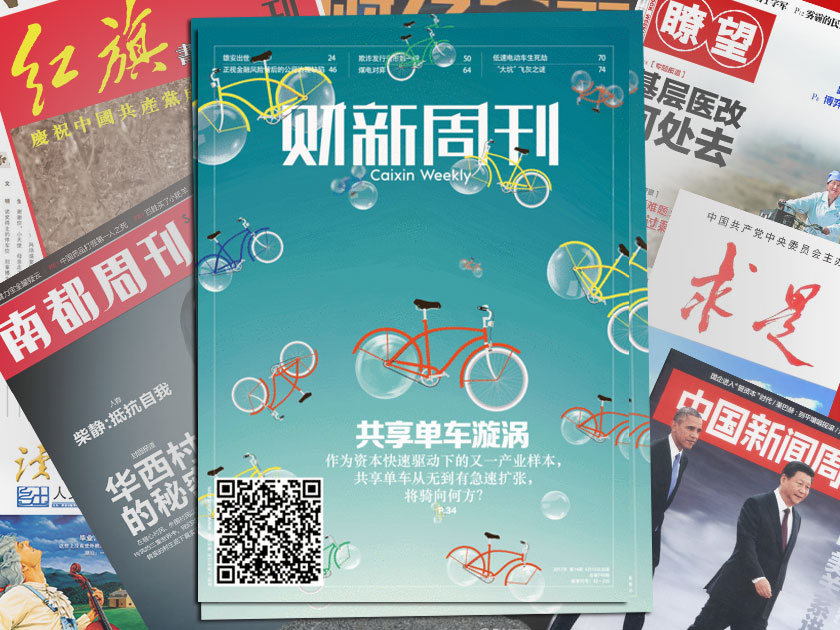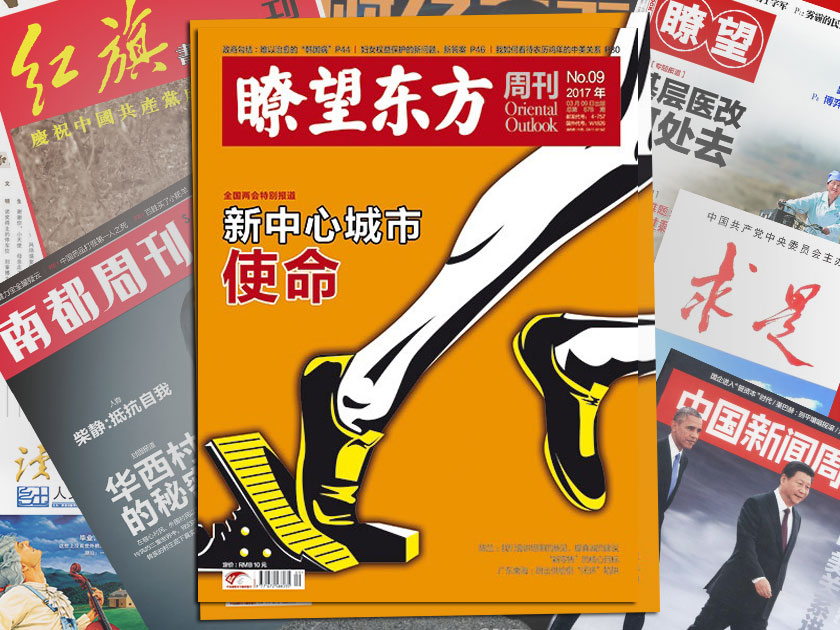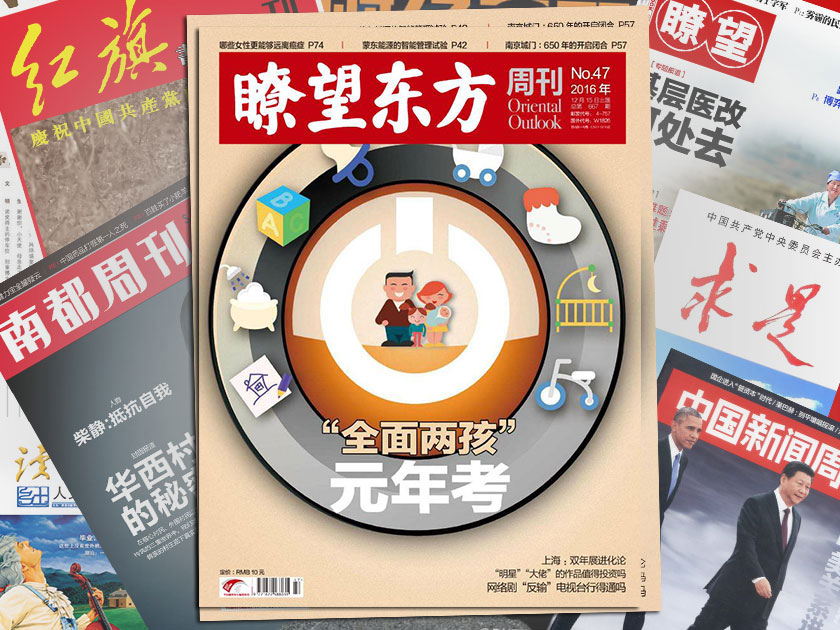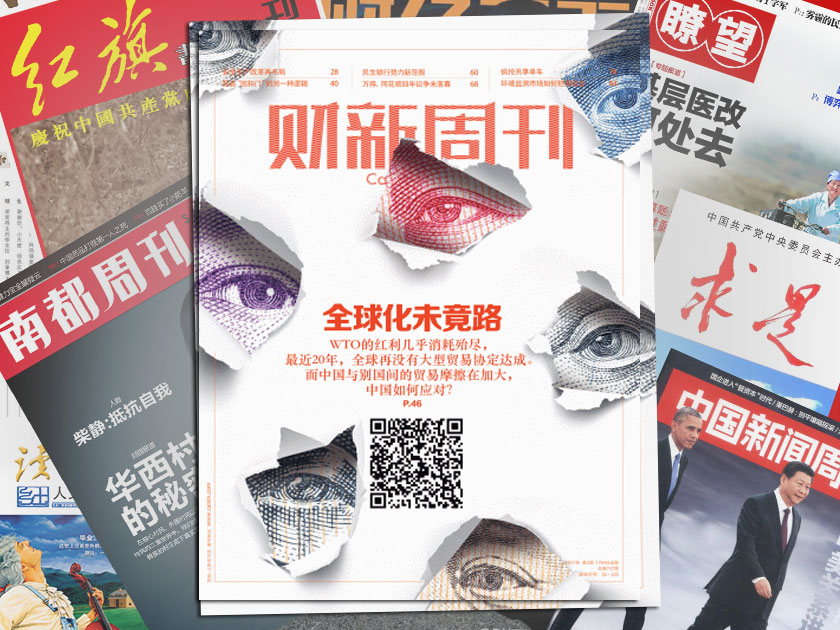
WeChat
China’s bike-sharing craze#Caixin Weekly#- Source:Update Time:2017-04-21
- While bicycles used to be the most popular traffic tool for Chinese in the 1980s, they have been rejuvenated 30 years later.China’s two largest bike-sharing companies, ofo and Mobike, started with the trend of shared bikes in several universities in Beijing and Shanghai in 2016.In the 14th issue of 2017, Caixin Weekly ran a cover story on the current bike sharing craze across the country, discussing the outlook of the industry which is now being pursued by big capital.

Chengdu, Wuhan and Zhengzhou stepping up efforts to become National Central City#Oriental Outlook#- Source:Update Time:2017-04-14
- In 2016, it was announced that Chengdu, the capital of Sichuan province in southern China, Wuhan, capital of Hubei province, and Zhengzhou, capital of Henan province, would be constructed into National Central Cities.In the ninth issue of 2017, Oriental Outlook ran a cover story discussing the reasons behind the selection of the three cities and the decision to support them to be developed into National Central City.

China’s booming smog-related businesses #Oriental Outlook#- Source:Update Time:2017-02-09
- The 3rd issue of the Oriental Outlook magazine published on January 19, 2017 ran a cover story on the booming anti-smog businesses in China in recent years, bringing insights from several insiders from the industry.

Pros and cons of China's two-child policy#Oriental Outlook#- Source:Update Time:2017-01-13
- Driven by fears over the growth of the elderly population and gender imbalance, the Chinese government put an end to the decades-old one-child policy in 2016, allowing couples to have two children. The new population policy has hit the spot in the economically developed regions where affluent families' life quality is not affected by raising more children. Meanwhile, it has backfired in the places falling short of public services and resources supply.





